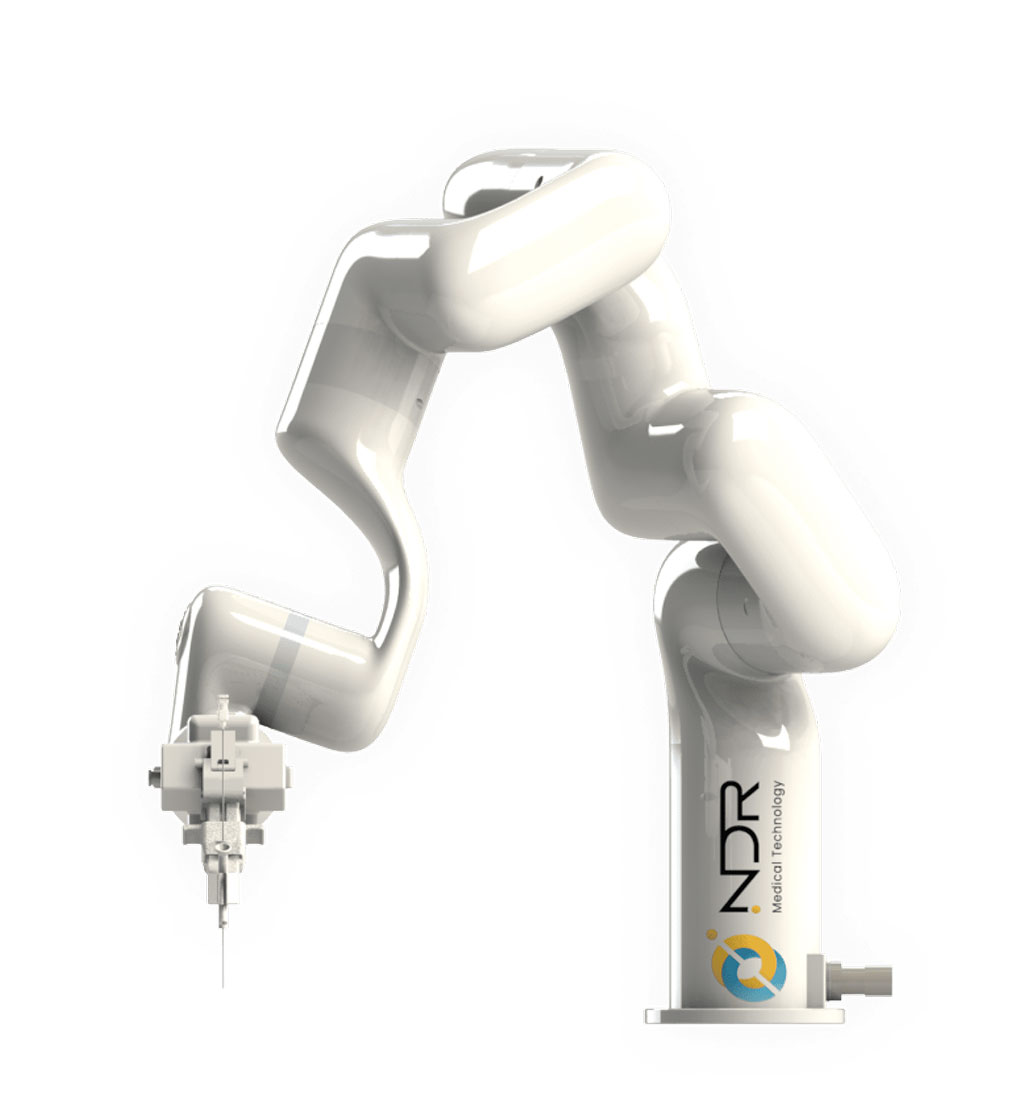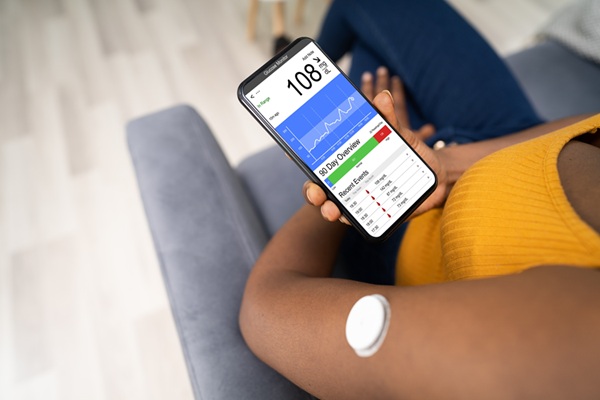Robot-Assisted Needle Positioning in CT-Guided Procedures Improves Accuracy
|
By HospiMedica International staff writers Posted on 07 Mar 2023 |

Percutaneous image-guided needle interventions are generally performed for diagnostic and therapeutic purposes, such as biopsies and ablations. In such procedures, the interventional radiologist (IR) usually performs a freehand needle positioning using imaging modalities, such as ultrasound, magnetic resonance imaging, or computed tomography (CT). It can be challenging to achieve accurate needle positioning, especially in out-of-plane approaches. Over the past decades, robots have been developed to improve the precision of needle positioning. To improve needle positioning accuracy, robotic systems have been developed over the past few decades. For their effective application in clinical practice, these robotic systems must support a wide range of entry points and needle path angles that allow for optimal trajectory choices. In addition to accurate needle positioning, robotic systems may also offer the potential for reduced radiation exposure and shorter procedure times, irrespective of the practitioner's experience. Now, a new study has found that robotic assistance for needle positioning during CT-guided biopsy increases accuracy without increasing procedure times.
During procedures requiring needle positioning, robot assistance results in fewer adjustments in comparison to freehand techniques, even for seasoned interventional radiologists, according to the findings of a study by researchers at Radboud University Medical Center (Nijmegen, The Netherlands). For this study, the researchers used NDR Medical Technology’s (Singapore) ANT-C system that is designed to plan needle trajectory and orient physicians to insert needles manually with great accuracy. ANT-C is not a floor-mounted system, allowing it to be used with any CT scanner, and can also help position multiple needles based on just one scan.
Experts utilized an abdominal phantom to compare robot-assisted needle placements with those executed by an interventional radiology fellow and an experienced interventional radiologist. The analysis involved a total of 12 positionings. According to the results, the robot system significantly improved the number of successful needle targets (20/24 vs. 14/24), while providing greater precision, requiring fewer adjustments in contrast to freehand positioning. There was no significant difference in procedure times between the two methods (19.5 ± 9.2 minutes with robotic assistance vs. 21.0 ± 6.9 minutes freehand). Although the fellow experienced more significant benefits from the assistance, both providers' performance showed improvement with the use of the robotic system.
The researchers acknowledge that the ANT-C system is technically feasible and provides potential for use in clinical settings. However, more research is required to assess whether robotic assistance can improve outcomes and its impact on radiation dose in human patients. While there is a high likelihood that robot assistance can enhance accuracy, speed up procedures and lower radiation exposure, other factors need to be evaluated before its implementation. Factors such as installation, sterilization, and costs can vary widely based on the type of system used. Therefore, the researchers have emphasized the importance of evaluating these adjunct factors.
Related Links:
Radboud University Medical Center
NDR Medical Technology
Latest Surgical Techniques News
- 3D-Printed Blood Vessel Scaffolds Could Transform Heart Bypass Surgeries
- Novel Imaging Technique Helps View Blood Perfusion During Esophageal Surgery
- Minimally Invasive Surgery Proven Safe and Effective for Complex ‘Whipple’ Procedure
- Catheter-Based Procedures Offer Less Invasive Option for Treatment of Valvular Disease
- Laparoscopic Surgery Improves Outcomes for Severe Newborn Liver Disease
- Novel Endoscopy Technique Provides Access to Deep Lung Tumors
- New Study Findings Could Halve Number of Stent Procedures
- Breakthrough Surgical Device Redefines Hip Arthroscopy
- Automated System Enables Real-Time "Molecular Pathology" During Cancer Surgery
- Groundbreaking Procedure Combines New Treatments for Liver Tumors
- Ablation Reduces Stroke Risk Associated with Atrial Fibrillation
- Optical Tracking Method Identifies Target Areas in Robot-Assisted Neurosurgery
- General Anesthesia Improves Post-Surgery Outcomes for Acute Stroke Patients
- Drug-Coated Balloons Can Replace Stents Even in Larger Coronary Arteries
- Magnetic Kidney Stone Retrieval Device Outperforms Ureteroscopic Laser Lithotripsy
- Absorbable Skull Device Could Replace Traditional Metal Implants Used After Brain Surgery
Channels
Critical Care
view channel
AI-Enhanced Wearables Could Transform Type 2 Diabetes and Prediabetes Care
Artificial intelligence (AI)–powered wearable devices, particularly continuous glucose monitors, are rapidly changing how people with prediabetes and Type 2 diabetes understand and manage their blood sugar.... Read more
Breathable Electronic Skin Paves Way for Next-Generation Wearable Devices
Electronic skin devices are designed to adhere closely to the human body to monitor health and biosignals, but long-term use often leads to skin irritation caused by trapped sweat and poor breathability.... Read morePatient Care
view channel
Revolutionary Automatic IV-Line Flushing Device to Enhance Infusion Care
More than 80% of in-hospital patients receive intravenous (IV) therapy. Every dose of IV medicine delivered in a small volume (<250 mL) infusion bag should be followed by subsequent flushing to ensure... Read more
VR Training Tool Combats Contamination of Portable Medical Equipment
Healthcare-associated infections (HAIs) impact one in every 31 patients, cause nearly 100,000 deaths each year, and cost USD 28.4 billion in direct medical expenses. Notably, up to 75% of these infections... Read more
Portable Biosensor Platform to Reduce Hospital-Acquired Infections
Approximately 4 million patients in the European Union acquire healthcare-associated infections (HAIs) or nosocomial infections each year, with around 37,000 deaths directly resulting from these infections,... Read moreFirst-Of-Its-Kind Portable Germicidal Light Technology Disinfects High-Touch Clinical Surfaces in Seconds
Reducing healthcare-acquired infections (HAIs) remains a pressing issue within global healthcare systems. In the United States alone, 1.7 million patients contract HAIs annually, leading to approximately... Read moreHealth IT
view channel
EMR-Based Tool Predicts Graft Failure After Kidney Transplant
Kidney transplantation offers patients with end-stage kidney disease longer survival and better quality of life than dialysis, yet graft failure remains a major challenge. Although a successful transplant... Read more
Printable Molecule-Selective Nanoparticles Enable Mass Production of Wearable Biosensors
The future of medicine is likely to focus on the personalization of healthcare—understanding exactly what an individual requires and delivering the appropriate combination of nutrients, metabolites, and... Read moreBusiness
view channel
Philips and Masimo Partner to Advance Patient Monitoring Measurement Technologies
Royal Philips (Amsterdam, Netherlands) and Masimo (Irvine, California, USA) have renewed their multi-year strategic collaboration, combining Philips’ expertise in patient monitoring with Masimo’s noninvasive... Read more
B. Braun Acquires Digital Microsurgery Company True Digital Surgery
The high-end microsurgery market in neurosurgery, spine, and ENT is undergoing a significant transformation. Traditional analog microscopes are giving way to digital exoscopes, which provide improved visualization,... Read more
CMEF 2025 to Promote Holistic and High-Quality Development of Medical and Health Industry
The 92nd China International Medical Equipment Fair (CMEF 2025) Autumn Exhibition is scheduled to be held from September 26 to 29 at the China Import and Export Fair Complex (Canton Fair Complex) in Guangzhou.... Read more















